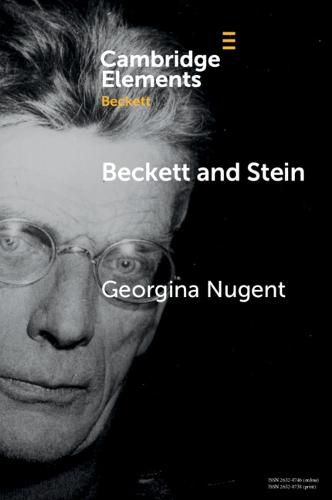Readings Newsletter
Become a Readings Member to make your shopping experience even easier.
Sign in or sign up for free!
You’re not far away from qualifying for FREE standard shipping within Australia
You’ve qualified for FREE standard shipping within Australia
The cart is loading…






What motivated Beckett, in 1937, to distance himself from the 'most recent work' of his mentor James Joyce, and instead praise the writings of Gertrude Stein as better reflecting his 'very desirable literature of the non-word'? This Element conducts the first extended comparative study of Stein's role in the development of Beckett's aesthetics. In doing so it redresses the major critical lacuna that is Stein's role and influence on Beckett's nascent bilingual aesthetics of the late 1930s. It argues for Stein's influence on the aesthetics of language Beckett developed throughout the 1930s, and on the overall evolution of his bilingual English writings, arguing that Stein's writing was itself inherently bilingual. It forwards the technique of renarration - a form of repetition identifiable in the work of both authors - as a deliberate narrative strategy adopted by both authors to actualise the desired semantic tearing concordant with their aesthetic praxes in English.
$9.00 standard shipping within Australia
FREE standard shipping within Australia for orders over $100.00
Express & International shipping calculated at checkout
What motivated Beckett, in 1937, to distance himself from the 'most recent work' of his mentor James Joyce, and instead praise the writings of Gertrude Stein as better reflecting his 'very desirable literature of the non-word'? This Element conducts the first extended comparative study of Stein's role in the development of Beckett's aesthetics. In doing so it redresses the major critical lacuna that is Stein's role and influence on Beckett's nascent bilingual aesthetics of the late 1930s. It argues for Stein's influence on the aesthetics of language Beckett developed throughout the 1930s, and on the overall evolution of his bilingual English writings, arguing that Stein's writing was itself inherently bilingual. It forwards the technique of renarration - a form of repetition identifiable in the work of both authors - as a deliberate narrative strategy adopted by both authors to actualise the desired semantic tearing concordant with their aesthetic praxes in English.